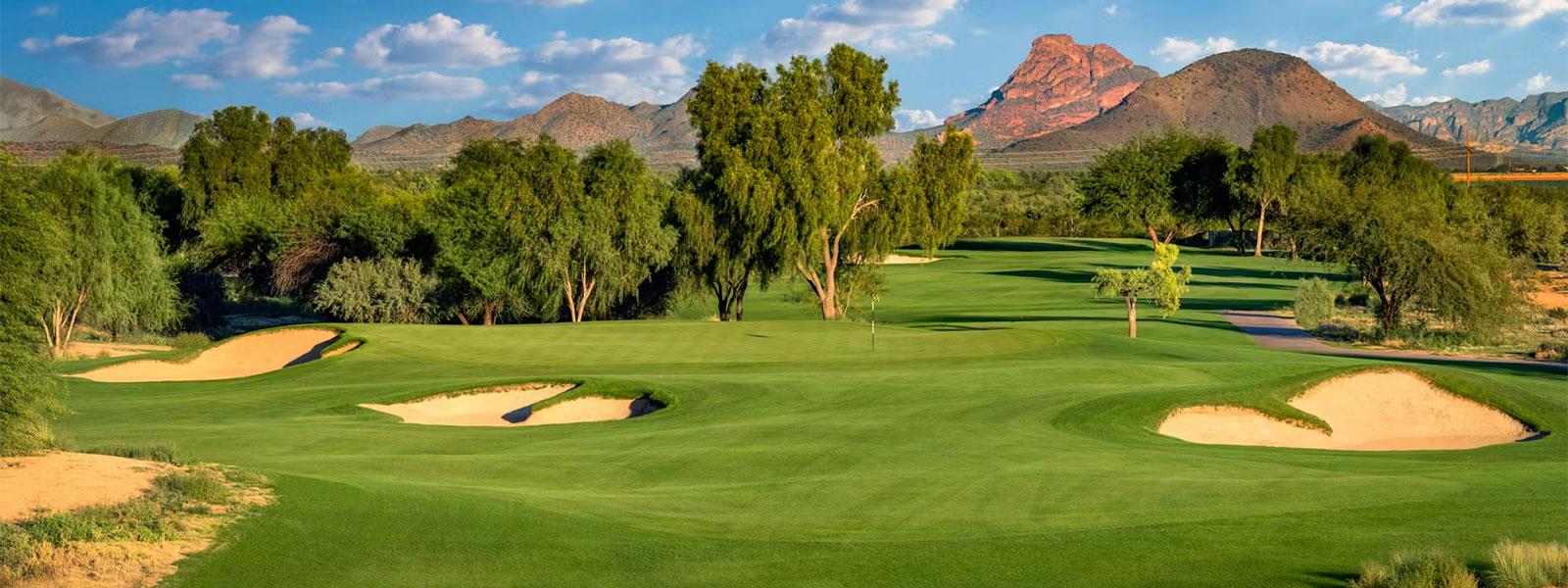2025 Summer Maintenance & Overseed Schedule
Dates are subject to change
Piipaash Course
Closed June 9 through June 27 for greens aerification.
Closed July 21 through August 2 for greens aerification.
Closed October 12 at 12pm, reopening October 31, 2025 for overseed.
Cart path only through November 21, 2025.
O’odham Course
Closed June 30 through July 18 for greens aerification.
Closed August 4 through August 15 for greens aerification.
Closed September 21 at 12pm, reopening October 10, 2025 for overseed.
Cart path only through October 30, 2025.
Putting Green
Closed September 15 through October 9, 2025 for overseed.
Driving Range
Closed September 15 through October 9, 2025 for overseed.
What is Aeration and Why do We Do IT?
Aeration is a vital turf management process that helps keep our golf course healthy, playable, and sustainable–especially in Arizona’s dry, compacted soils. Over time, foot traffic, carts, and irrigation lead to soil compaction, which limits the movement of air, water, and nutrients to the roots of the grass. Aeration involves mechanically removing small plugs of turf and soil to relieve compaction, improve drainage, and encourage stronger root growth.
How It Works
- Core Aeration: Small holes (typically 1/2″ to 3/4″) are punched into the turf, and cores of soil are removed.
- Topdressing: A layer of sand is applied to help fill the holes, smooth the surface, and assist with seed or fertilizer integration.
- Recovery Time: Depending on wither and course conditions, full recovery typically takes 7-14 days.
What Golfers Should Know
- Temporary Disruption: Aerated greens and fairways may look and feel rough for a short period, but they remain playable.
- Long-Term Benefits: despite the short-term inconvenience, aeration leads to healthier turf, smoother greens, and better playing conditions over time.
- Timing: In Arizona, aeration is commonly done in spring and /or fall when conditions are ideal for turf recovery and growth.
What is Overseeding?
Each fall, golf courses in Arizona undergo a process called overseeding to maintain lush, green playing conditions throughout the cooler months. Due to our desert climate, the warm-season Bermuda grass that thrives in summer goes dormant and turns brown when temperatures drop. To ensure continued playability and aesthetics, we overseed with a cool-season grass–typically perennial ryegrass on tees, fairways and roughs. On the greens, we overseed with Poa Trivialis.
The Overseeding Process Includes
- Scalping: The existing Bermuda grass is mowed very short to allow sunlight and space for new seed to grow.
- Seeding: Ryegrass is spread over the course–tees, fairways, greens, and roughs.
- Topdressing & Fertilizing: A thin layer of sand or soil is applied, and fertilizers are used to promote healthy germination.
- Watering: The course is heavily watered for 10-14 days to ensure the seed takes root. During this time, cart access and play may be limited or altered.
Why It Matters to Golfers
- Improved Winter Play: Overseeding allows us to offer green, playable turf year-round.
- Temporary Disruptions: Expect some course closures, cart path restrictions, and less-than-perfect playing conditions during the grow-in period, typically from late September through October.
- Long-Term Benefit: Once established, ryegrass provides excellent winter playing surfaces until spring, when Bermuda resumes growth and ryegrass naturally fades out.
We appreciate your patience during these necessary transitions and thank you for your continued support!

